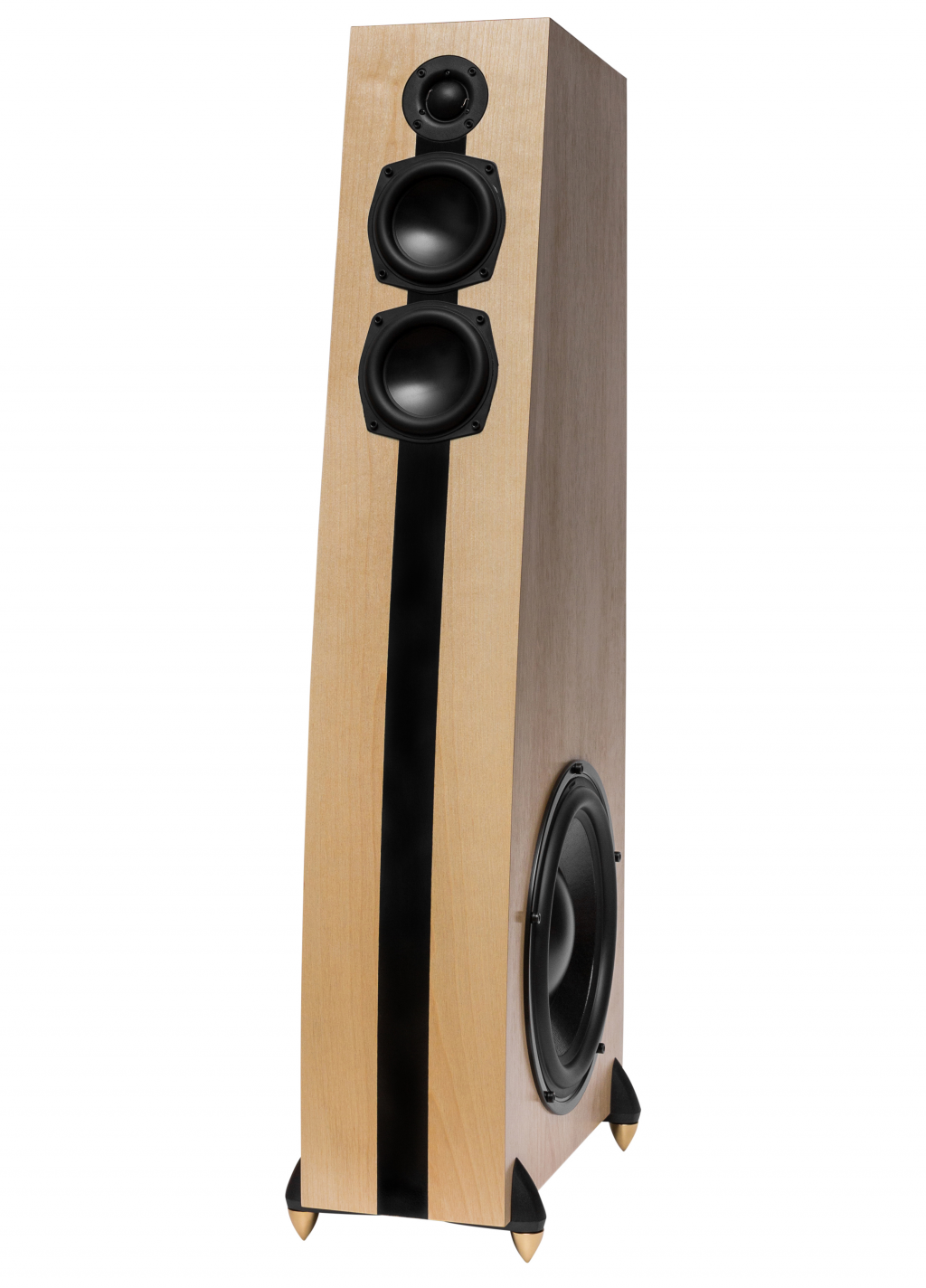
The Dayton Audio Neo 10’s (DN-10’s)
Designer:
Thomas Zarbo
Category Division:
Dayton Audio
Project Description:
The approach for this design was to have a full-range speaker in a non-traditional cabinet shape, but in an easy to build format. This is an easy-to-build speaker with a unique ‘look’ that fits in pretty much anywhere.
Design Goals:
In considering how I usually listen to music, I realized that I don’t often listen very loudly, which made me wonder if I could achieve full frequency reproduction in a fairly small and slender tower shape. Since overall SPL was not my goal, compromises could be made to allow for lower bass reproduction as well as a lower tweeter crossover point allowing for a cleaner midrange reproduction.
Driver Selection:
I chose the ND105-4 for the woofers, and the ND28F-6 as the tweeter. A smaller neo tweeter is often paired with these woofers, but I wanted to minimize the amount of midrange reproduction for the woofers, as they have massive excursion… and the beefier ND28F tweeter allowed for that lower crossover point.
Also, this is a passive radiator design, using the Dayton SD270-PR Passive Radiator with a total of 20 grams of weight added.
Enclosure Design:
The enclosure is deceptively easy to build. It is constructed of 3/4″ MDF with the exception of the front baffle, which is 3 layers of 1/4″ MDF, easily glued up and bent in one operation. The box is roughly 35″ high, 6″ wide, and 14″ deep. The bottom angles are all 90 degrees, and the top angles are both 96 degrees to keep things simple.
The area where the drivers are is flat, the curve begins below them, and continues to about 4-5″ before the bottom, keeping things nice and simple. This box can be constructed with a circular saw, router, and jig saw.
Enclosure Assembly:
I glued up the top, back, and bottom boards to one side, along with the 4 braces in one operation.
Before gluing up the second side, I created a small board of 1/4″ MDF to house the crossover, and drilled holes in the bottom of the enclosure to make it easier to install the crossover after construction.
Then I glued up the other side to that assembly after dry. I cut out the holes for the Passive Radiators mirroring each other, then added the cross brace behind the PR for additional strength.
Crossover Design:
The crossover is still under development, but will likely be a second order for the woofers with a .5 coil on the lower woofer, as well as a fourth order filter for the tweeter given it’s lowish crossover point.
Conclusion:
I wanted a full-range mini-tower speaker that could fit in almost anywhere, but be fairly easy to build for the novice. The gentile curve on the front adds interest and creates an interesting box that excels at distributing sound up to the listeners ears regardless of where they are in the room, or what they may be doing. This F3 of this speaker is 41 Hz, and with the passive radiator placed so close to the ground, the bass is not lacking at all… no subwoofer is necessary. The down side is that this system will only play medium-loud before maximum excursion is reached, so maximum output is somewhat limited. They do play fairly loud before complaining however, and have a full-range satisfying sound overall.

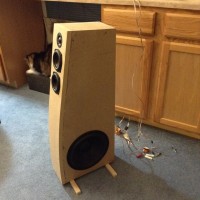
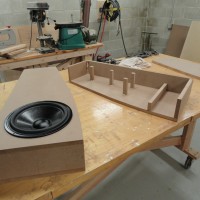
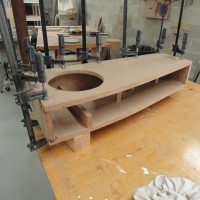
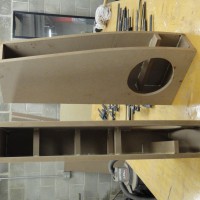
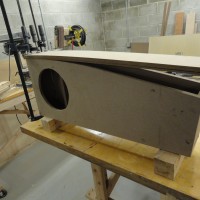
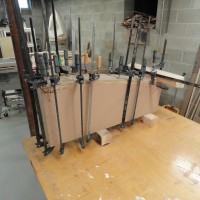
Nice job Tom.
Tom very nice!! These will be my next build. Did you line the walls at all with anything or just put some fill behind each driver at the top? Bob Polka
Looks great! Are you going to post detailed specs/crossovers etc.?
How low can it go?
Sorry I missed these questions. All answered here: http://techtalk.parts-express.com/forum/speaker-project-gallery/1290831-the-dn-10-s-2016-mwaf-dayton-audio-category-entry#post1290831
Not bad but I would opt for a D’Appolito or mtm design to minimize lobbing providing smoother response in various listening positions. And more woofers to increase the output of the speakers and drive the passive radiator more to it’s full potential. Polk used this design back in the day using multiple small woofers and a large passive radiator and this was a very effective design.
More woofers means a larger box; this is what I wanted size-wise. The PR does it’s job well; the 8″ didn’t model very well IMO, and this one performed just right. The fact that there are a few mm of ‘unused’ excursion isn’t an issue in any real sense. ‘How does it perform’ is the real question.
By the way, I know and love the Polk designs you’re referring to. I wanted a pair of those badly when I was younger!
Could you substitute a bigger woofer to increase SPL
You could, but then it would basically be a totally different speaker. The crossover is specific to these drivers.
Cool project! Are there any drawings for the cabinets available? Please advise & thanks for sharing!
Alrui, sorry I didn’t see this sooner.
Here is a link to the project on the speaker forum: http://techtalk.parts-express.com/forum/speaker-project-gallery/1290831-the-dn-10-s-2016-mwaf-dayton-audio-category-entry
It shows the cabinet layout measured up in an easy-to-understand way.
TomZ